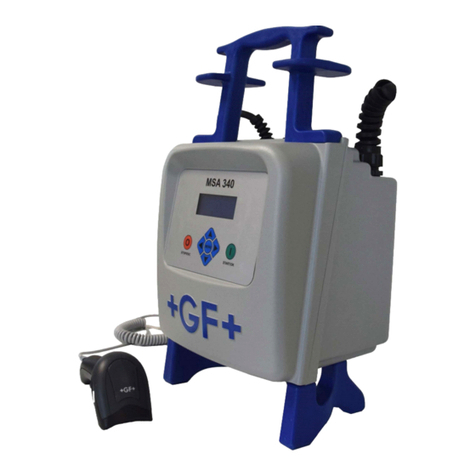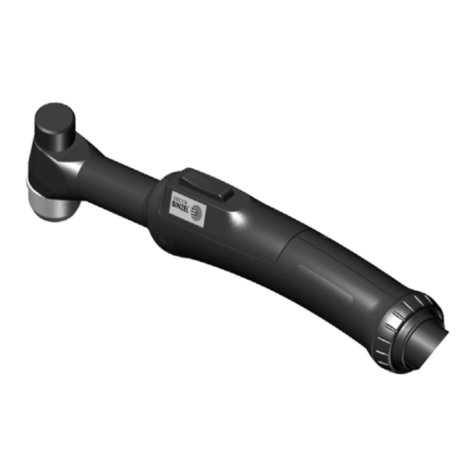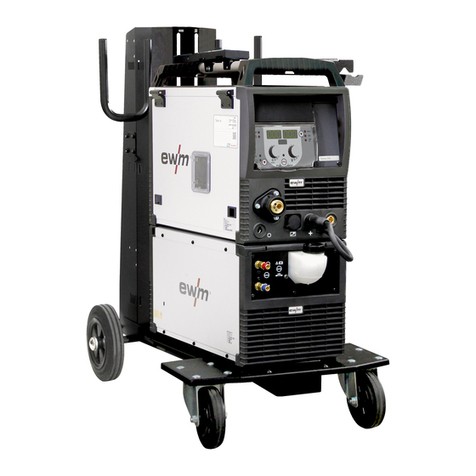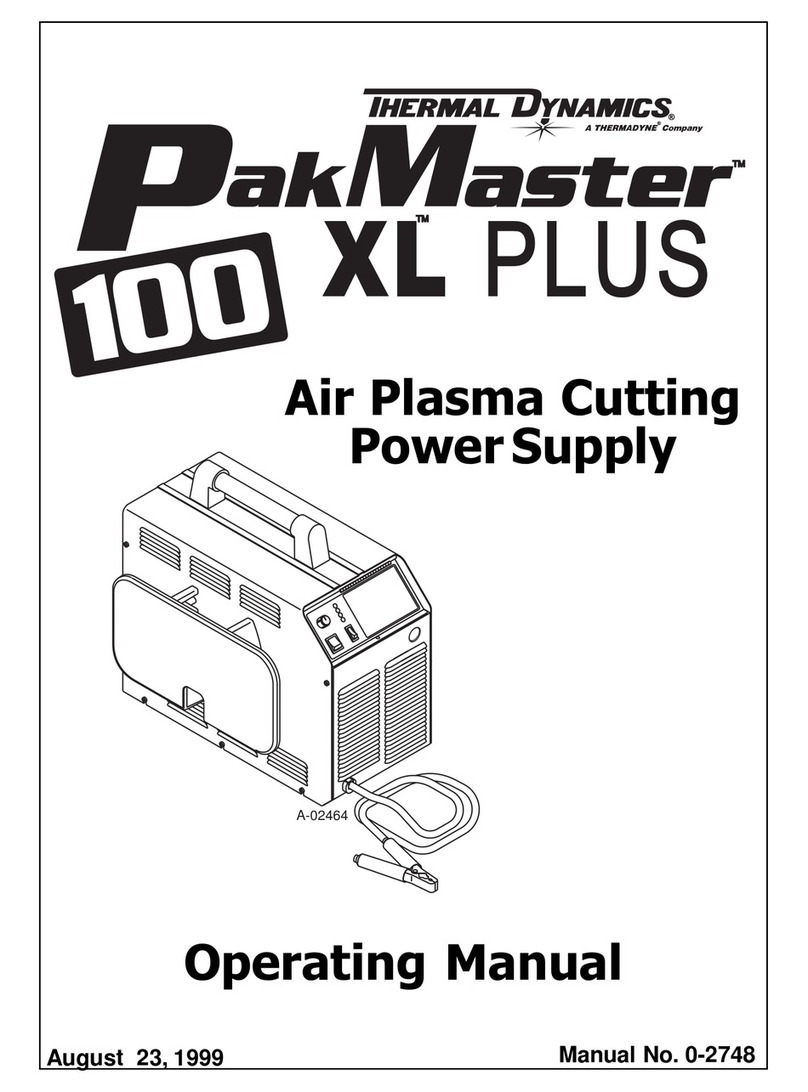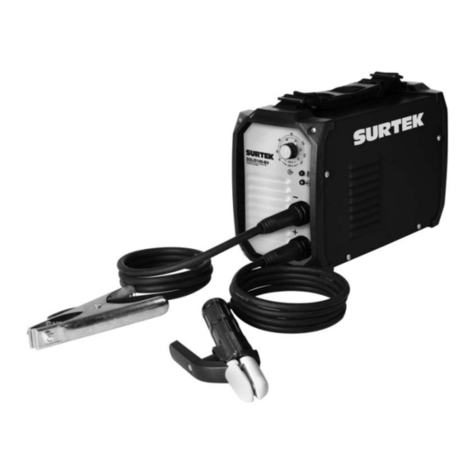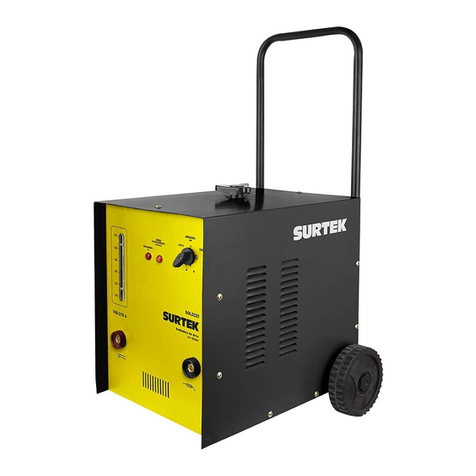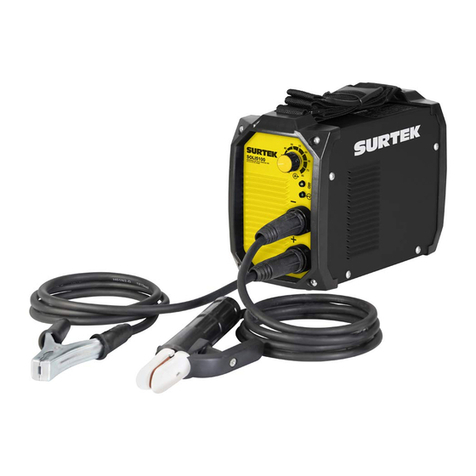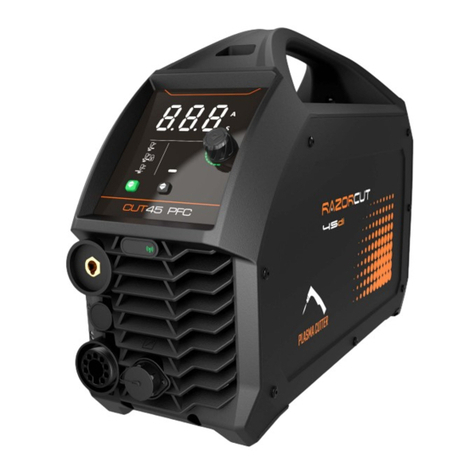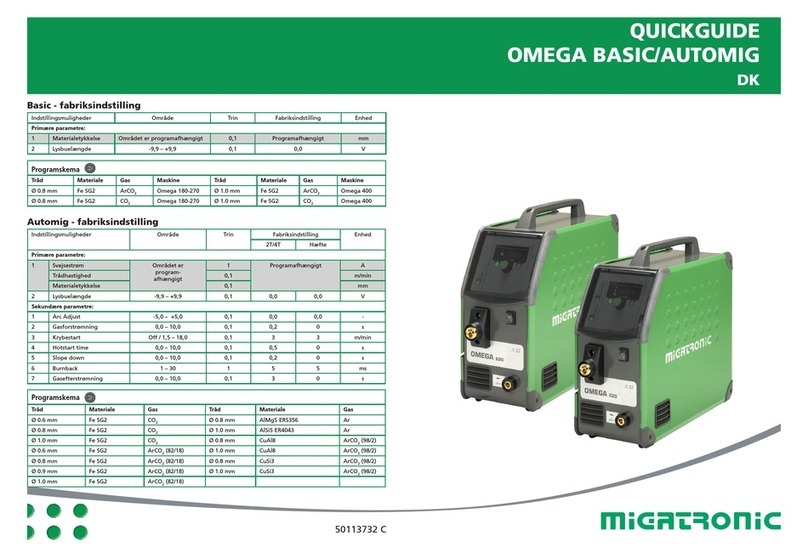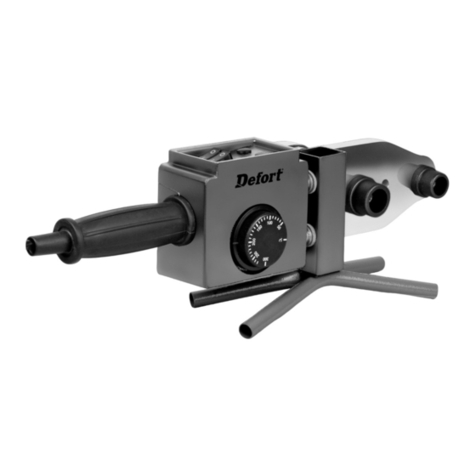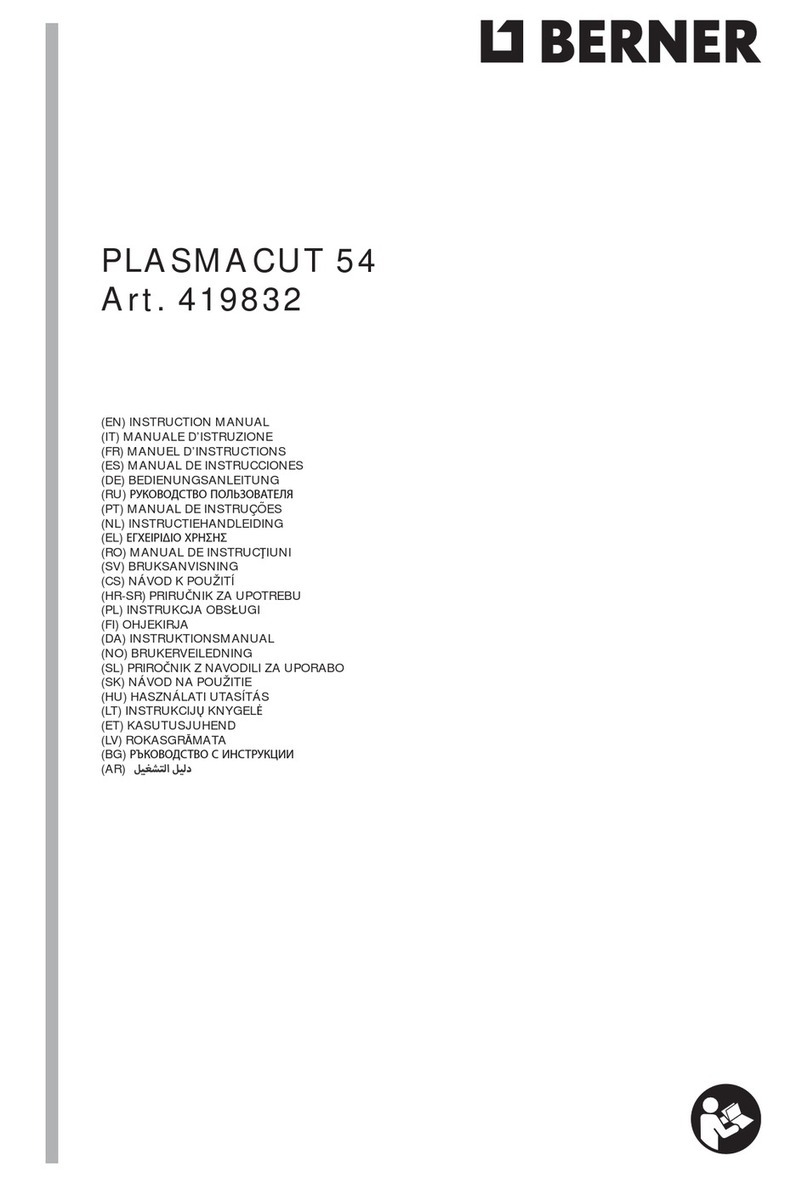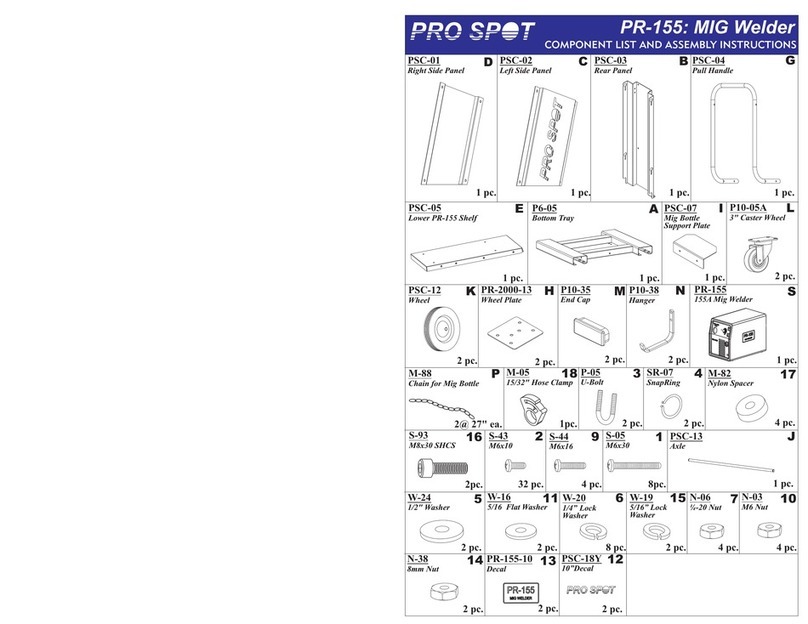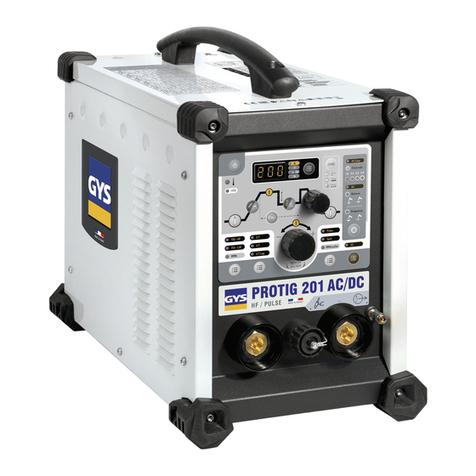
4
Las lesiones graves mencionadas anteriormen-
te se refieren a aquellas que necesitan un tra-
tamiento a largo plazo en el hospital causado
por la pérdida de la concentración en el trabajo.
Herida (a alta temperatura o baja temperatura)
lesiones, choques eléctricos, fracturas, envene-
namiento etc; lesiones ligeras significa quema-
duras o descargas eléctricas sin curado a largo
plazo; la destrucción de las materias indica la
pérdida de propiedad y la destrucción de la má-
quina.
PELIGRO: Para evitar lesiones corporales gra-
ves causadas por accidentes, debe observar los
siguientes elementos
1. La construcción de la fuente de alimentación
de entrada, la selección del sitio para la máqui-
na, el mantenimiento de la pieza de trabajo des-
pués de la soldadura y la manipulación de los
residuos se debe a las normas pertinentes y el
estándar interno de su empresa.
2. Personas ajenas a la operación están prohibi-
das de entrar en el sitio donde se soldará.
3. Las personas que usan un marcapasos o sufren
de golpes de calor no pueden acercarse al solda-
dor durante la operación o al entorno del sitio
donde se esté soldando sin el permiso médico.
4. Permita que una persona profesional o exper-
ta instale, mantenga y repare el soldador.
5. Deje que el personal que tiene el conocimien-
to en operación y seguridad sobre la maquina
use el equipo.
6. No use la maquina si no es para soldar.
7. Mientras esté soldando, no toque el regula-
dor de voltaje.
8. Recuerde siempre mantener la chispa del arco
alejado de las demás personas cuando esté sol-
dando. Esto se debe únicamente a la interferen-
cia de la chispa del arco.
IMPORTANTE: Para evitar obtener una des-
carga eléctrica, por favor, observe las siguientes
reglas. Una vez que toca las partes eléctricas,
estas pueden causar un choque letal o quema-
duras:
1. No toque las partes eléctricas.
2. Deje que el electricista se encargue de conec-
tar el soldador a tierra de acuerdo con la regla-
mentación mencionada.
3. Cuando instale y repare la máquina, debe qui-
tar la energía de la caja de distribución y operar
después de 5 minutos.
4. No utilice el cable si la cubierta protectora ais-
lada está dañada y el conductor está expuesto.
5. Asegure el aislamiento de la junta del cable.
6. No utilice el soldador sin revestimiento ais-
lante.
7. Use guantes de aislamiento secos
8. Por favor use una red segura cuando esté ope-
rando en un lugar alto
9. Mantenga y reparare el soldador regularmen-
te, y solo uselo en buenas condiciones de uso.
10. Por favor apague toda la energía de entrada
al terminar la operación.
11. Utilice un dispositivo a prueba de golpes
cuando utilice la máquina en lugares estrechos
o altos.
IMPORTANTE: Este aparato no se destina
para utilizarse por personas (incluyendo niños)
cuyas capacidades físicas, sensoriales o mentales
sean diferentes o estén reducidas, o carezcan de
experiencia o conocimiento, a menos que dichas
personas reciban una supervisión o capacitación
para el funcionamiento del aparato por una
persona responsable de su seguridad. Los niños
deben supervisarse para asegurar que ellos no
empleen los aparatos como juguete.
UTILIZACIÓN Y CUIDADOS DE LAS
HERRAMIENTAS ELÉCTRICAS
No fuerce la herramienta eléctrica. Use la he-
rramienta eléctrica correcta para su aplicación.
La herramienta eléctrica correcta hará el traba-
jo mejor y más seguro al ritmo para la que fue
concebida.
No use la herramienta eléctrica si el interruptor
no acciona “encendido” y “apagado”. Cualquier
herramienta eléctrica que no pueda controlarse
con el interruptor es peligrosa y debe repararse.
Desconecte la clavija de la fuente de alimenta-
ción y/o de la batería antes de efectuar cual-
quier ajuste, cambio de accesorios, o de alma-
cenar las herramientas eléctricas. Tales medidas
preventivas de seguridad reducen el riesgo de
arrancar la herramienta accidentalmente.
Almacene las herramientas eléctricas inactivas
fuera del alcance de los niños y no permita el
manejo de la herramienta eléctrica a personas
no familiarizadas con las herramientas o con
estas instrucciones. Las herramientas eléctricas
son peligrosas en manos de usuarios no entre-
nados.
Mantenga las herramientas eléctricas. Com-
pruebe que las partes móviles no estén desa-
lineadas o trabadas, que no haya piezas rotas
u otras condiciones que puedan afectar la ope-
ración de las herramientas eléctricas. Las herra-
mientas eléctricas se reparan antes de su uso,
cuando están dañadas. Muchos accidentes son

